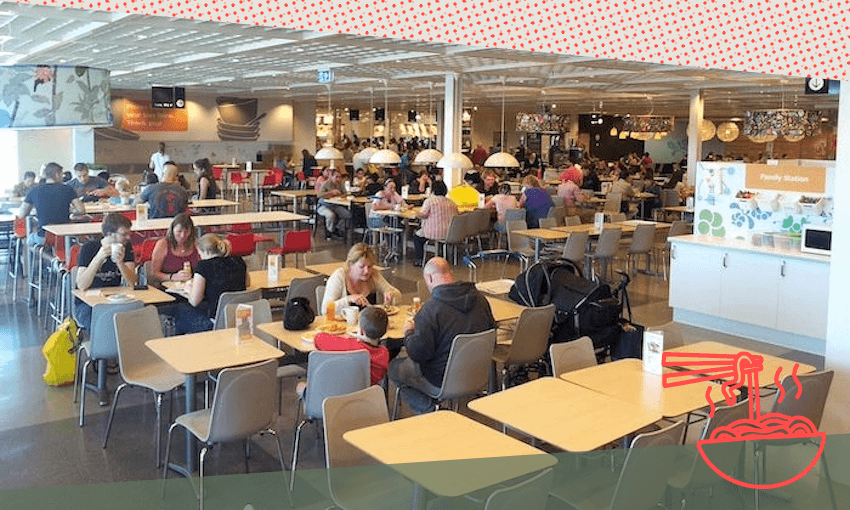In an excerpt from our food newsletter The Boil Up, new editor Lucinda Bennett revisits a favourite piece of food writing.
When I really think about my approach to food – my philosophy of food, if you will – I always come back to a text I consider sacred, Rebecca May Johnson’s I Dream of Canteens. Like Johnson, I dream of a space that is mythical when it should be common, a space with ample seating for all bodies, access to glasses of water, clean bathrooms and cheap, nourishing food. It’s a space where you can come alone or with a large group, where you can stay as long as you need and not be made to feel unwelcome once a certain period of time has elapsed since you spent money.
This dream space is as rare in Aotearoa as it is in London, where Johnson writes from, although she does describe her experiences of dining at IKEA canteens (something Tāmaki residents will get to try next year) as coming close, noting, “I experienced high levels of pleasure when eating and sitting and I witnessed many others who seemed to feel the same… If such a place existed in the city, I would go there every day.”
Where can we go, when we need to sit for a while and eat a plate of affordable, sustaining kai? I think of food courts, the ones inside malls but also tucked away in more industrial areas, like Delicious Link in Wairau Valley where my Mum and I took shelter one sweltering afternoon to share a bento box, a bowl of takoyaki and an incredible lychee milkshake. I think of the anonymity of fast food outlets that enables you to linger long over something from the saver menu or even use the bathroom without buying anything. I think about the Kaife I used to go to every day at AUT South Campus where a hot, calorie-dense lunch would cost only $6 (now $8, it seems).
My class’s favourite was Island Day when they had palusami, chop suey and paifala for dessert, and every Wednesday was reliably Pie Day, choose from two options with a rotating cast of veggie sides, buttered sweetcorn, scalloped potatoes, sweet roasted carrots. Then there are the RSA Halls across the motu where a generous plate of fish and chips might only set you back $10; takeaway shops with bain-maries of oily fried rice, beef noodles, golden wontons and a picnic table out front; community restaurants like Everybody Eats that provide sustenance alongside dignity and pleasure, serving chef-prepared, three-course meals on a pay-as-you-feel basis.
Delving into the history of canteens, Johnson learned about “British Restaurants”, state-subsidised canteens that were set up during wartime “to serve cheap hot food for everyone so that people had enough to eat things like semolina and stew.” After the war, the conservative government phased the Restaurants out, despite parliamentary discussions around the “astonishing improvements” noted in the wellbeing of workers. When I worked as a teacher, I observed something similar when I moved to a school that was part of the Ka Ora, Ka Ako programme that provides healthy lunches for every student, every day.





